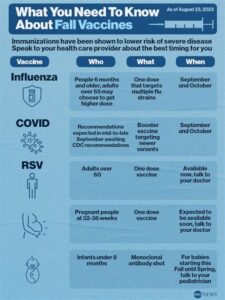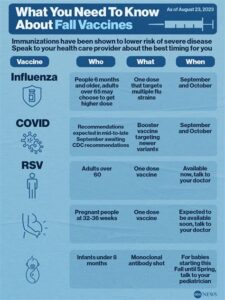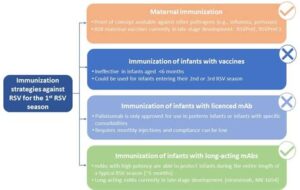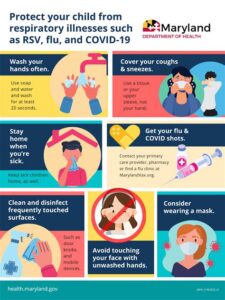Explore the RSV vaccine, its costs, and the impact of research, production, and government subsidies on vaccine accessibility for children.As respiratory syncytial virus (RSV) concerns continue to rise, understanding the cost of the RSV vaccine becomes increasingly important. This blog post delves into the multifaceted financial aspects of the RSV vaccine, guiding you through the various factors that influence its pricing. From the extensive research and development costs incurred during the vaccine’s creation to the expenses associated with production and distribution, we will explore how these elements contribute to the overall cost for consumers. Moreover, we will examine the crucial role of government subsidies in making the vaccine more accessible. Whether you’re a healthcare provider, a concerned parent, or simply someone interested in vaccine economics, this comprehensive overview will equip you with valuable insights into the financial landscape of the RSV vaccine.
Understanding the RSV Vaccine
Respiratory Syncytial Virus (RSV) is a significant cause of respiratory infections, particularly in infants and the elderly. The development of a vaccine against RSV is critical due to the virus’s substantial impact on public health. As efforts to combat RSV have gained momentum, understanding the intricacies surrounding the RSV vaccine, including its development, effectiveness, and cost, has become increasingly important.
The RSV vaccine aims to provide immunity, thereby preventing severe respiratory illness. Current research focuses on various vaccine platforms, such as live-attenuated viruses, subunit vaccines, and monoclonal antibodies, each presenting unique advantages and challenges. The selection of an appropriate vaccine type caters to different populations and age groups, particularly those at high risk like preterm infants and older adults.
Developing a successful RSV vaccine is not just a scientific endeavor; it also involves evaluating its potential cost. The expenses involved in research, trials, and eventual distribution play a vital role in making the vaccine accessible to those who need it most. The combination of production methods and the scale of distribution can significantly affect the final price of the vaccine, making understanding these factors crucial for healthcare systems and policymakers.
Factors Affecting RSV Vaccine Cost
The cost of developing and distributing the RSV vaccine is influenced by a variety of factors. Understanding these factors can help stakeholders, including healthcare providers and policymakers, make informed decisions regarding access and funding for the vaccine.
One significant element that affects the RSV vaccine cost is the research and development phase. This stage includes initial laboratory studies, *clinical trials*, and regulatory approvals. These processes can be both extensive and expensive, often costing millions of dollars before a vaccine can even be brought to market. Depending on the success rate of trials, these costs can vary significantly.
| Factor | Impact on Cost |
|---|---|
| Research and Development | High initial costs due to extensive trials and regulatory processes. |
| Production Costs | Variable based on the scale of manufacturing and technology used. |
| Distribution Expenses | Costs related to logistics, storage, and transportation. |
| Government Subsidies | Potential reduction in costs through funding and support. |
In addition to research and development, the costs associated with the production of the vaccine play a crucial role. Factors such as the technology used, the *scale of production*, and the sourcing of raw materials can all influence the overall cost. As technology advances, the potential for reduced production costs may emerge, but initial investments can be substantial.
Lastly, distribution expenses can significantly impact the final cost of the RSV vaccine. Expenses associated with shipping, storage conditions (especially maintaining cold chains), and local logistics can add layers of costs that must be considered. Efficient distribution systems can help mitigate these costs, but they require upfront investment and planning.
Research and Development Costs
The research and development (R&D) costs for the RSV vaccine are a critical factor that influences the overall pricing structure. Developing a new vaccine is a complex process that requires substantial financial investment and time. The journey from initial research to final product includes several stages, all of which contribute to the total R&D expenditure.
On average, the R&D costs for vaccines can range from $500 million to over $2 billion. This figure may vary based on the vaccine’s complexity, the technology used, and the duration of clinical trials.
- Preclinical Research: This initial phase involves laboratory tests and animal studies to evaluate the vaccine’s safety and efficacy.
- Clinical Trials: These trials are essential for testing the vaccine on humans across multiple phases. Each phase requires rigorous monitoring and can take years to complete.
- Regulatory Approval: Gaining approval from health authorities is a lengthy process involving detailed documentation and additional studies.
Due to these extensive costs, many pharmaceutical companies seek partnerships and funding from public institutions and private investors to share the financial burden and risk involved in developing the RSV vaccine. The impact of these R&D costs ultimately reflects on the price of the vaccine once it reaches the market.
Production and Distribution Expenses
The production and distribution expenses associated with the RSV vaccine play a crucial role in determining its overall cost. Several factors contribute to these expenses, which can significantly impact the final price for consumers and healthcare systems alike.
One of the main components of production expenses includes the manufacturing costs—which encompass raw materials, labor, and overhead. These costs can vary based on the complexity of the vaccine formulation and the economies of scale achieved during large-scale production. For example, advanced biologic processes may require specialized equipment, thereby increasing expenses.
Distribution expenses also add to the total cost of the vaccine. These costs involve logistics related to storage, handling, and transportation to ensure the vaccine remains effective. The need for refrigeration during transport can escalate costs due to the additional infrastructure required.
| Expense Category | Factors Influencing Cost |
|---|---|
| Manufacturing | Raw materials, labor rates, equipment depreciation |
| Logistics | Storage requirements, transportation methods, geographical challenges |
| Regulatory Compliance | Quality control, safety standards, approvals |
Ultimately, understanding these production and distribution costs is vital for stakeholders in the healthcare field, as they directly influence the accessibility and affordability of the RSV vaccine. By addressing these expenses, efforts can be made to mitigate costs and improve the reach of the vaccine in preventing RSV outbreaks.
Impact of Government Subsidies
The impact of government subsidies on the cost of the RSV vaccine cannot be overstated. Subsidies play a crucial role in making vaccines more accessible and affordable for the population. These financial injections from the government often help to alleviate the burden of high development and production costs for pharmaceutical companies.
Without government support, the price of the RSV vaccine could be prohibitively high, limiting access for at-risk populations such as infants and the elderly. By providing assistance, the government is essentially promoting public health and ensuring that more individuals receive the necessary immunizations.
- Reducing the overall development costs for vaccine manufacturers.
- Lowering the retail price, making it more affordable for healthcare providers and patients.
- Encouraging research and innovation by mitigating financial risks associated with vaccine development.
The strategic deployment of government subsidies can therefore lead to a healthier population and a decreased burden on healthcare systems, highlighting the significance of policy decisions in public health.
Frequently Asked Questions
What is the RSV vaccine?
The RSV vaccine is designed to protect individuals, especially infants and young children, from respiratory syncytial virus (RSV), which can cause severe respiratory infections.
Who should receive the RSV vaccine?
The RSV vaccine is primarily recommended for infants and young children, particularly those at high risk for severe RSV infections, such as preterm infants or those with chronic lung disease.
What factors influence the cost of the RSV vaccine?
Factors that influence the cost of the RSV vaccine include the manufacturer, the healthcare provider’s charges, geographic location, and whether insurance coverage is available.
Is the RSV vaccine covered by insurance?
Many health insurance plans cover the RSV vaccine for infants who are considered at high risk, but it is important to check with your specific insurance provider for details.
How much does the RSV vaccine typically cost out-of-pocket?
Out-of-pocket costs for the RSV vaccine can vary widely, but they may range from hundreds to thousands of dollars depending on the aforementioned factors.
Are there any financial assistance programs for the RSV vaccine?
Yes, there may be financial assistance programs available for families needing the RSV vaccine, often provided by non-profit organizations or through state health departments.
What are the benefits of getting the RSV vaccine?
The benefits of getting the RSV vaccine include reduced risk of severe RSV infections, fewer hospitalizations, and overall better health outcomes for at-risk children.





